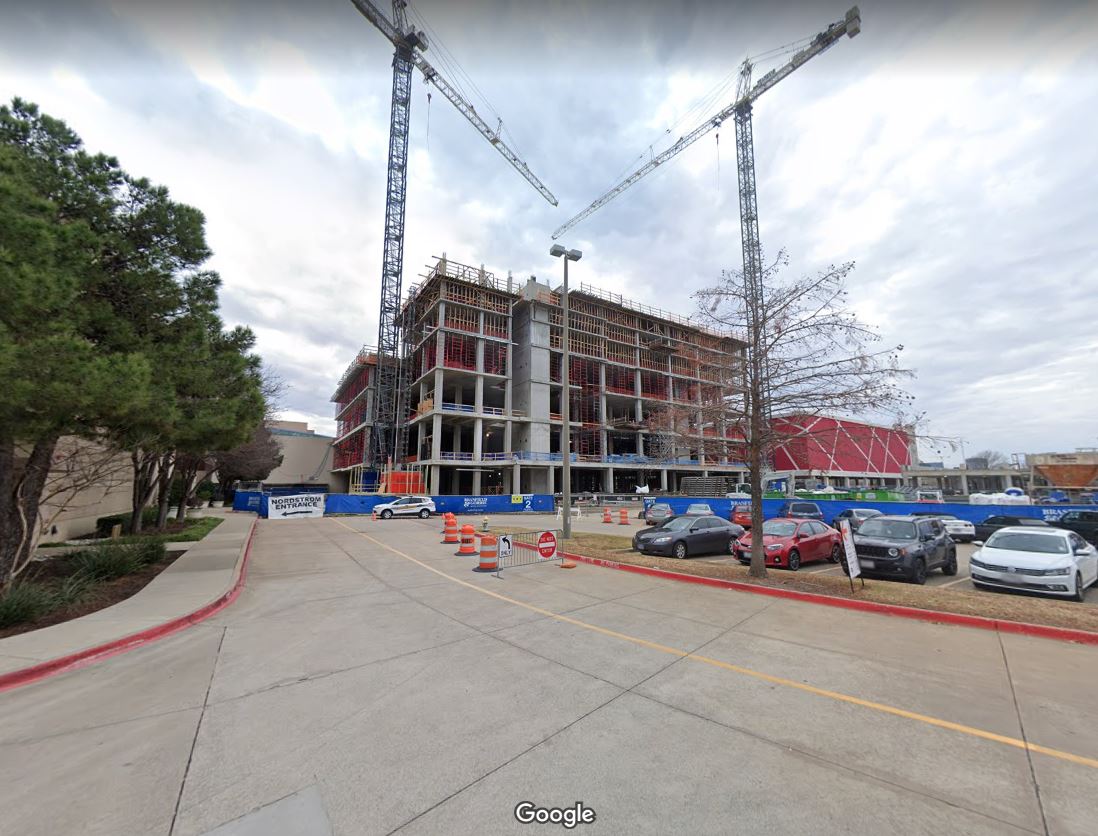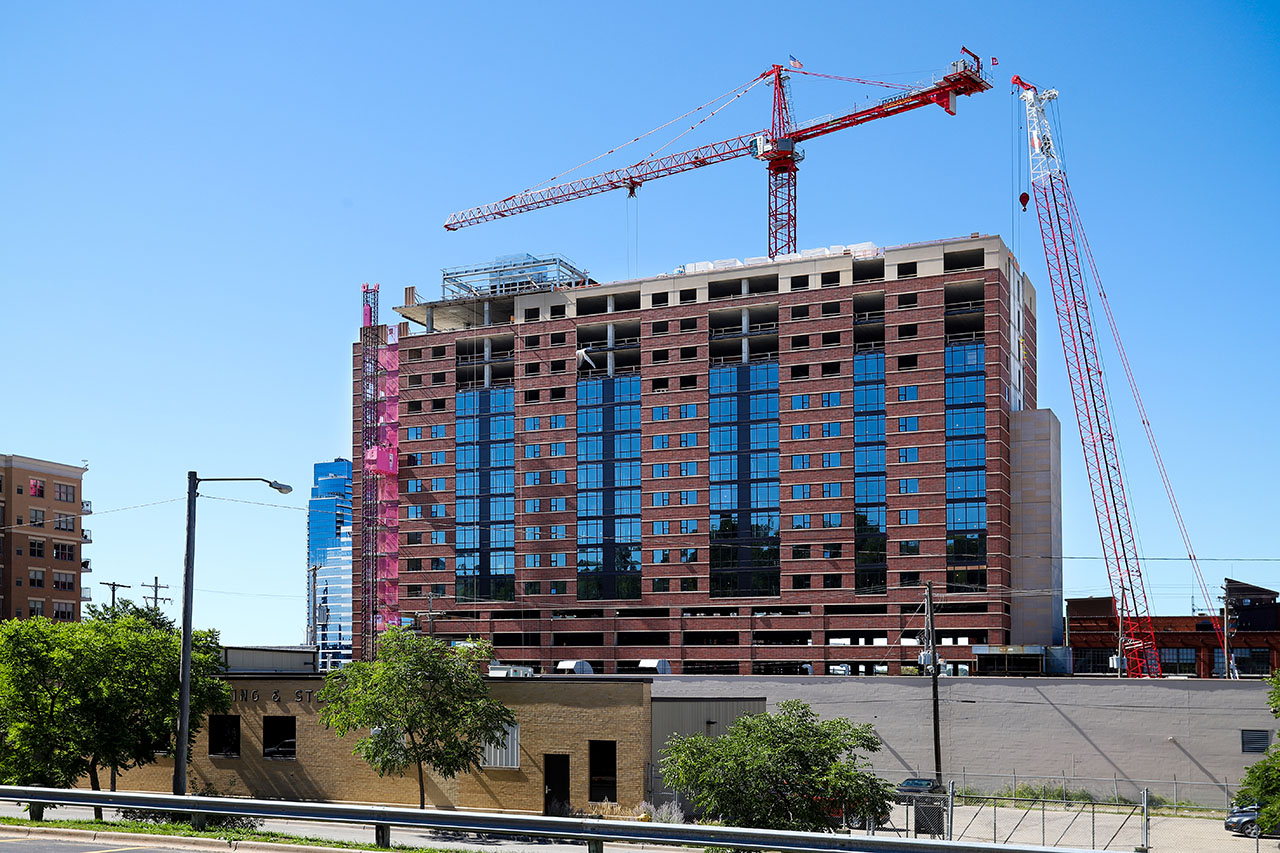Photo courtesy of O. Trevino Construction.
Texas-based O. Trevino Construction specializes in concrete paving and highway maintenance. The team knows that pavement maintenance needs to be accomplished with as little traffic disruption as possible while resulting in high quality construction. This led them to using COMMAND Center™ maturity monitoring on full-depth pavement repair projects, saving significant time on their construction schedules.
Typically, in full-depth pavement repair projects, teams will break beams or cylinders to test concrete strength for opening to traffic. However, beams are labor-intensive to make and break. If someone doesn’t make a beam correctly, the team could be stuck waiting on the lab for hours. Beams are very heavy and can be dangerous to move, especially in inclement weather. If concrete meets sufficient strength before a scheduled beam break, the team has no way of knowing and valuable time is wasted.
Maturity can bridge the gap between what is really going on with in-place concrete and what is being assumed when breaking beams for acceptance. Maturity can also prove that in-place concrete has achieved adequate strength sooner than anticipated than by just breaking beams and cylinders, meaning roads can be reopened to traffic sooner.
O. Trevino has a strong commitment to quality, schedule, and safety, so they needed a way to produce a high-quality product while also quickly reopening the road to traffic and limiting the amount of time the construction team spends in hazardous work zones.
The COMMAND Center™ System
COMMAND Center™ employs small, self-powered sensors placed in fresh concrete that automatically measure temperature data at predetermined intervals and store data internally. The sensors transmit data to a compatible device running the free, powerful COMMAND Center™ software. COMMAND Center™ software uses the time and temperature data and applies the Nurse-Saul or Arrhenius formula to easily and automatically calculate maturity—a proven scientific method that estimates when the concrete has achieved the desired strength.
Using COMMAND Center™ and the maturity method can reduce the number of beams a team must make and break. They will know sooner when their concrete has reached sufficient strength, allowing them to open roads to traffic sooner and get workers out of dangerous work zones more quickly.
O. Trevino has been using COMMAND Center™ since 2004 and has used it on hundreds of full-depth pavement repair projects of all different sizes throughout the Dallas-Fort Worth metro area.
Improved Construction Schedules, Increased Safety, Strengthened Reputation
When O. Trevino was first introduced to maturity in the mid-2000s, they found the change from traditional methods hard to trust. But after using COMMAND Center™ and comparing the data to the measurements they got breaking beams, the team saw that the data accurately correlated.
“We went out to a project way back then and the lab supervisor was skeptical that maturity would work,’” said Scott Riegler, a project engineer with O. Trevino. “I told him, ‘I fought like you until about three weeks ago. I’ll take a reading with the maturity meter, you break the beam, and we’ll share the results.’ We were within three or four pounds of each other.”
Now, many years later, Riegler finds himself convincing and helping others to use COMMAND Center™ maturity monitoring. Riegler also says using COMMAND Center™ and maturity monitoring has helped build the company’s reputation with the Texas Department of Transportation (TxDOT).
“The big thing about COMMAND Center™ is TxDOT can see the strength,” said Scott. “TxDOT can look at the reports generated by the software and it puts their minds at ease.”
COMMAND Center™ Sensors should be placed at critical locations in the concrete element being monitored. The number of sensors used depends on the job size. O. Trevino tasks their superintendent with monitoring the sensors, and after about 3.5 hours will begin to check the data every 10-20 minutes. COMMAND Center™ Sensors store readings at pre-defined fixed intervals to fit the customer’s specific needs for concrete monitoring.
“We like the two-minute intervals because we want to open the road as soon as we can,” said Riegler. “I also like the ease of use. You just put the sensors in the concrete—they are already calibrated so you don’t have to do anything. The orange leads make it easier not to accidently saw cut them.”
Riegler says using COMMAND Center™ has enabled them to break fewer beams, leading to opening roads faster and saving them significant amounts of time.
“COMMAND Center™ shaves at least 30 minutes off every beam break, so we’re saving about 4.5 hours each day. Sitting out there in traffic is dangerous, so saving that time also means less exposure to hazards and fewer risks on the freeway.”
In addition to time, Riegler estimates that COMMAND Center™ has saved them thousands of dollars in crew hours and increased production.
“With COMMAND Center™, you get a more rapid reading compared to beams, so you can pour more concrete,” said Riegler. “If you know it’s taking 3 hours to reach strength, then we can pour another 8 yards, kicking up productions.”
Riegler says his primary reasons for sticking with COMMAND Center™ since 2004 are the ingenuity of the product, ease of use, and customer service.
“Customer service is a huge benefit,” said Riegler. “If you have a problem, the COMMAND Center™ team says, ‘call me at home!’ Everyone is very responsive and customer-service oriented.”









